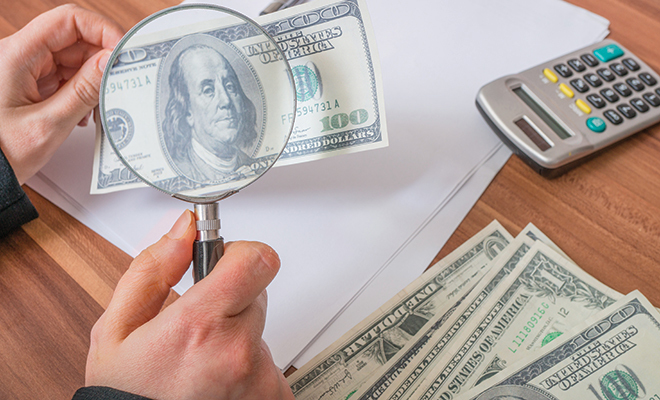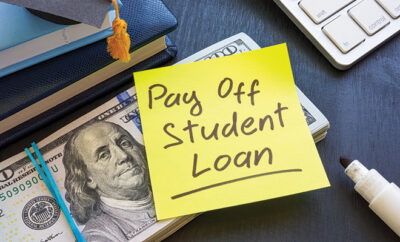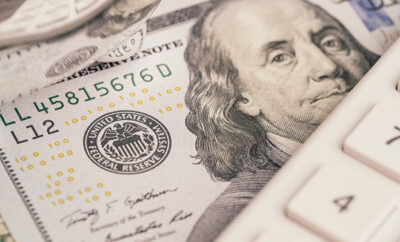
Is your money funny?
In this golden age of credit card chips and virtual bank transactions, paper money still has clout in everyday exchanges. But with the conveniences of technology come unfortunate byproducts as well–for instance, counterfeit money.
With a quality printer and an eye for detail, counterfeiters can create an endless cash flow, often landing in the wallets of unsuspecting consumers. In the last fiscal year, the Secret Service seized almost $146 million in counterfeit money–yes, the same Secret Service that protects the president. Abraham Lincoln created the team in 1865 with the sole intention of solving a rampant counterfeit problem at the time, and they still hold that role today. However, fake money nevertheless slips through the cracks, and even banks can unknowingly receive and dole out counterfeit cash.
While many businesses have counterfeit-detecting pens at the register, these pens are not sanctioned by the U.S. government. Plus, these pens only detect one detail that many savvy counterfeiters have found their way around: the paper. Genuine bills are printed on starch-free paper, which turns the iodine-based ink yellow; wood-based paper made with starch will turn the ink black or blue.
It may be in your best interest to know the minutiae of that cash you’re handing over or receiving. Be especially wary when dealing with in-person transactions via websites such as Craigslist, at garage sales and the like.
The latest bills
Throughout the early 2000s, the Federal Reserve gave American bills a facelift, redesigning the $5, $10, $20, $50 and $100 notes with complex details to make the counterfeiting of money more difficult. Remembering these updates could keep you from falling prey to the crime:
• You know what cash feels like, so follow your gut. If the bill feels texturized, then it’s a good sign you are handling real money. However, if it feels as smooth as something you would print at home, somebody may have done just that.
• Check out the watermark; it should be the exact image as the main portrait. For instance, a genuine $100 bill will have a portrait of Benjamin Franklin, and its watermark will also be Mr. Franklin, which should be visible from either side. Also, the original portrait should have depth and definition; if the face looks flat, it’s worth a second look.
• The serial number is extremely helpful in determining real versus fake. Make sure the number, always found to the right of the portrait, is the same color as the Treasury Seal. The numbers in the series should line up as if they were typed by a computer, not placed one by one. Lastly, if you are receiving a stack of bills for a large transaction, make sure each bill has a different serial number; many counterfeiters don’t have the time or patience to alter each individual note.
• Another obvious element to look for is the color-shifting ink on all bills between $10 and $100. When you tilt a bill 45 degrees, the copper-colored ink should turn green, and the Liberty Bell on the $100 bill does the same. This is difficult for counterfeiters to replicate, so make it one of the first details you test.
• If you hold your cash up to the light and look closely, with the exception of the $1 bill, you will see a security thread embedded vertically through the paper. Inscribed in that thread is the note’s denomination, and each will shine a different color when held beneath a UV light, a dead giveaway if you can’t spot that.
What to do if you suspect counterfeit cash
No matter where or from whom you received the cash, it is crucial to notify the U.S. Secret Service or your local police immediately.
If you believe you received counterfeit bills through a personal transaction from a stranger (i.e., Craigslist, Facebook garage sales), the U.S. Department of Treasury recommends, above anything, not to return the money to the other person. Try to retain as much descriptive information as possible, including physical characteristics and car details. Write your initials and date within the white border of the bill, place it in a plastic bag, and return it to your local police department or mail it to the nearest U.S. Secret Service office.
If you suspect that you have received counterfeit bills from a bank or store, speak with a manager before leaving the building, and be sure to contact police. Since the source is so difficult to track, it is best to get the bills out of your possession appropriately. The unfortunate reality is if you use counterfeit money, unknowingly or not, you will likely never see that money again, and disputing charges can be a daunting task.
As consumers, we bear the responsibility to ensure that we receive and give genuine bills. By being aware of how our money should look and feel, we can prevent other people from becoming victims of this centuries-old scheme. HLM
Sources: treasury.gov, secretservice.gov, federalreserve.gov, consumerreports.org and time.com.







